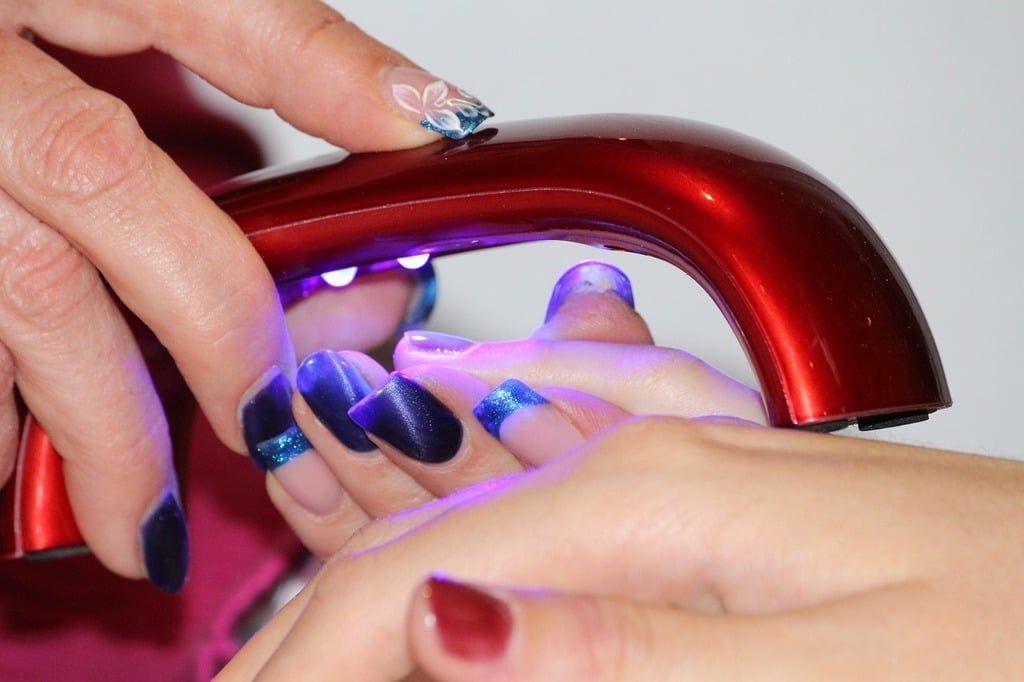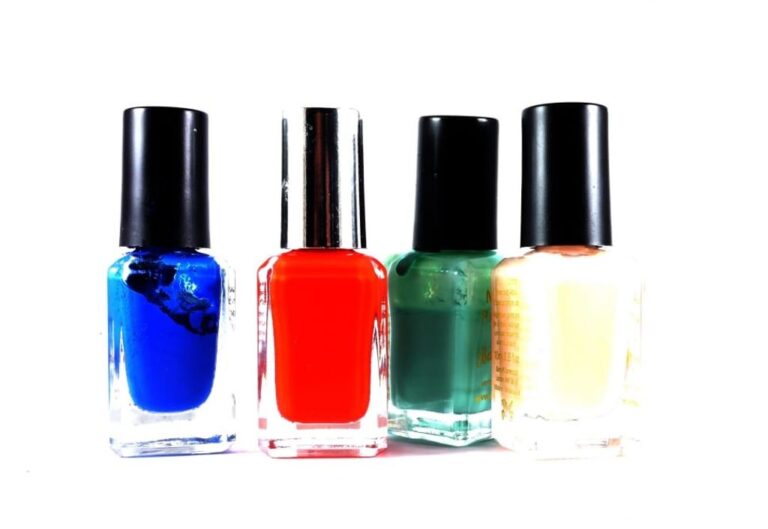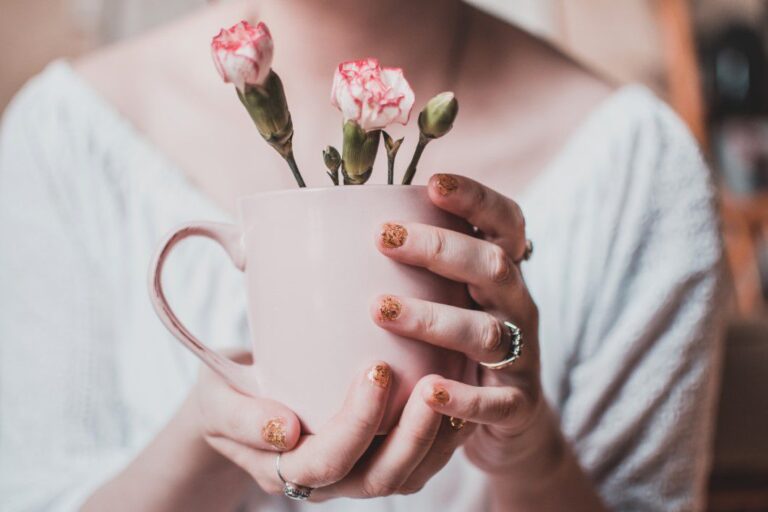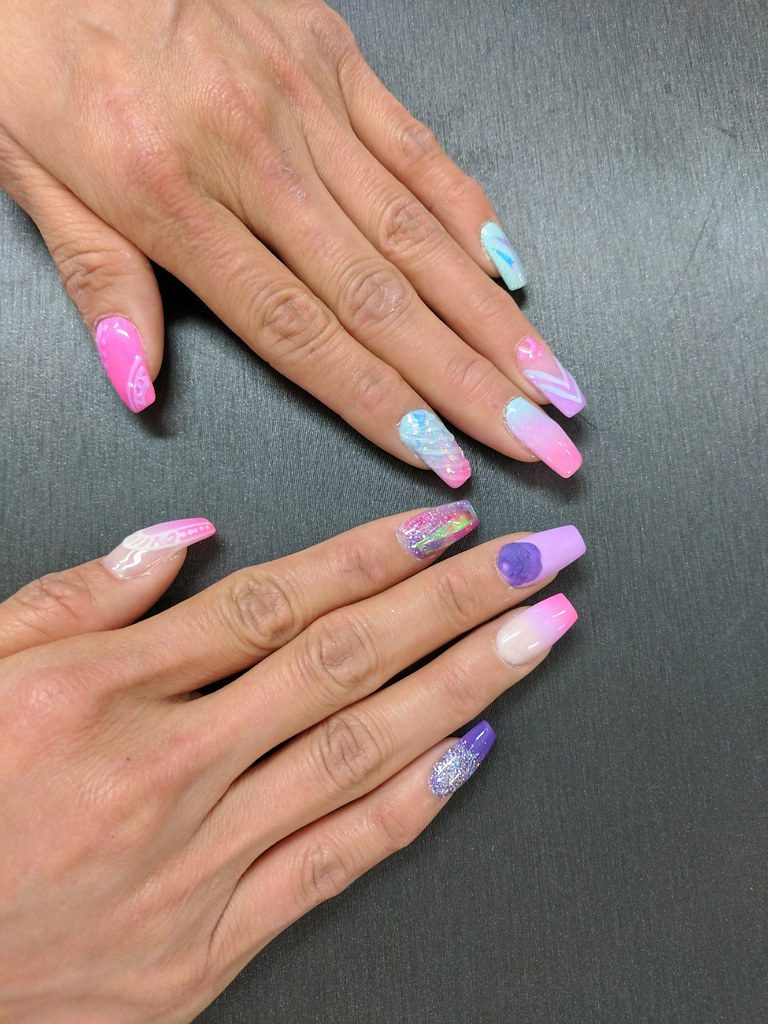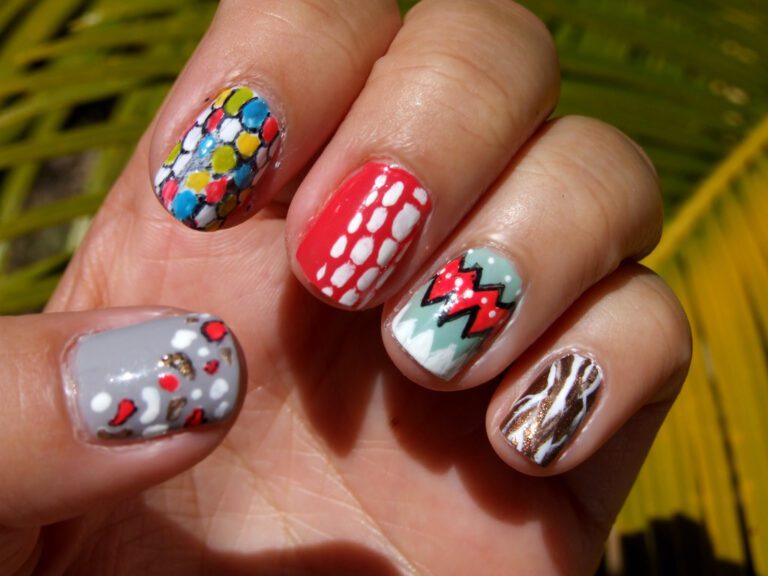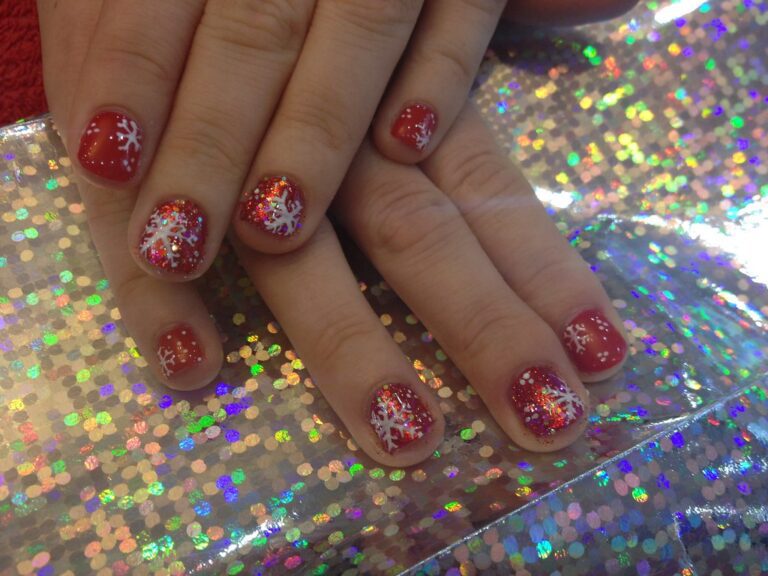“Nail Vitality: Can Nails Die?”
In the world of beauty and self-care, nails play a significant role in enhancing one’s appearance. Understanding the vitality of nails and their ability to thrive is essential for maintaining healthy and beautiful hands. This article explores the anatomy of nails, the concept of nail death, factors affecting nail health, signs of unhealthy nails, caring for your nails, and dispelling myths and misconceptions surrounding nail care.
Key Takeaways
- Nails are composed of non-living keratinized cells, but the nail bed and matrix are living tissues responsible for nail growth and regeneration.
- Nail death is a misnomer, as nails do not die in the traditional sense, but can experience damage and deterioration.
- Nutrition, external stressors, and infections can significantly impact nail health, emphasizing the importance of a balanced diet and protective measures.
- Visual indicators such as discoloration, ridges, and brittleness can signal underlying nail problems that require attention and care.
- Regular nail maintenance, moisturizing, and professional treatments can promote nail health and recovery, while debunking myths about nail care products helps in making informed choices.
Understanding Nail Anatomy

The Structure of the Nail
The human nail is a complex structure that serves as a protective shield and enhances tactile sensitivity. Composed primarily of keratin, a type of protein also found in hair and skin, nails are both tough and resilient. The visible part of the nail, known as the nail plate, is what most people commonly refer to as the nail.
- The nail plate sits on the nail bed, a specialized skin area that supplies the nail with nutrients and support.
- The cuticle, a layer of skin at the base of the nail, acts as a protective barrier against infections.
- The nail matrix, located beneath the cuticle, is where new nail cells are generated.
Keeping the cuticle intact is crucial for nail health, as it shields the matrix from bacteria and potential damage.
Nails grow from the matrix, and as new cells are produced, older ones are pushed out, compacted, and take on the familiar flat, hard form of the nail plate. This growth process is continuous, and the rate of growth can be influenced by various factors such as age, nutrition, and health.
Growth and Regeneration
The growth and regeneration of nails is a continuous process that reflects the overall health of an individual. Nails grow from the matrix, a tissue under the skin at the nail’s base, which is responsible for producing new nail cells. These cells gradually harden and are pushed outwards as they accumulate, forming the nail plate we see.
- Proper nutrition and blood flow are essential for healthy nail growth. Factors such as age, hormonal changes, and seasons can influence the rate of nail growth. For instance, nails typically grow faster in young people and during the summer months.
Tip: Keeping your nails well-hydrated and avoiding harsh chemicals can aid in maintaining the integrity of the nail structure during its growth and regeneration cycle.
Nail Bed and Matrix: The Living Parts
The nail bed and matrix are the living parts of the nail. The nail bed is the tissue underneath the nail, while the matrix is the area where the nail grows. The matrix is responsible for producing the cells that become the nail plate. This process is influenced by various factors such as nutrition, external stressors, and overall health. Understanding the vitality of the nail bed and matrix is crucial for maintaining healthy nails.
The Concept of Nail Death

Can Nails Truly Die?
When discussing the vitality of nails, it’s crucial to understand that nails themselves are composed of dead cells; thus, they cannot "die" in the traditional sense. However, the health and growth of nails are directly influenced by the nail matrix, the living tissue beneath the nail bed responsible for producing new nail cells.
- Damage to the nail matrix can lead to issues that may resemble nail death, such as discoloration, brittleness, or cessation of growth. It’s important to distinguish between the nail plate, which is the hard part we see and consider as the nail, and the underlying living structures.
- Nail trauma
- Infections
- Systemic diseases
These factors can severely affect the nail matrix, leading to what might be perceived as nail death. Proper care and avoiding harmful practices are essential for maintaining the health of the nail matrix and, by extension, the nails themselves.
Tip: Always protect your nails from harsh chemicals and physical trauma to prevent damage to the nail matrix.
Distinguishing Between Nail Damage and Death
When assessing the health of our nails, it’s crucial to differentiate between damage and death. Nail damage is often a reversible condition caused by external factors such as trauma, harsh chemicals, or excessive moisture. This can manifest in various forms, from simple discoloration to more severe splitting or cracking.
In contrast, nail death, or onychomadesis, is the separation and eventual shedding of the nail from the nail bed. This condition is typically the result of severe damage to the nail matrix, the part of the nail bed responsible for nail growth. Factors contributing to this can include severe infections, certain medications, or systemic diseases.
To clarify the distinction, consider the following points:
- Nail damage is usually temporary and can often be remedied with proper care.
- Nail death implies a more serious underlying issue that may require medical attention.
- Recovery from nail damage can be achieved with time and treatment, whereas nail death may result in permanent loss or the need for medical intervention to restore the nail.
Tip: Regular inspection of your nails can help in early detection of problems, allowing for timely treatment and prevention of further damage or potential nail death.
Factors Affecting Nail Health

Nutritional Influences on Nail Vitality
The health of our nails is significantly influenced by our dietary choices. A balanced diet rich in vitamins, minerals, and proteins is essential for maintaining nail strength and preventing brittleness. For instance, biotin, a B-complex vitamin, is known for its role in promoting nail growth and resilience.
Essential nutrients that are particularly important for nail health include:
- Vitamin A: Necessary for cell growth and repair.
- Vitamin C: Helps in collagen production, which is crucial for nail structure.
- Iron: Prevents spoon-shaped nail deformities and supports oxygen delivery to nail tissues.
- Zinc: Aids in nail tissue growth and repair.
- Omega-3 fatty acids: Provide moisture to the nail bed, enhancing nail flexibility.
Incorporating a variety of nutrient-dense foods such as leafy greens, nuts, seeds, and lean proteins can help ensure that your nails receive the nourishment they need. A deficiency in any of these nutrients can lead to noticeable changes in nail appearance and health.
Tip: A consistent intake of these nutrients is more beneficial than sporadic supplementation. Focus on a well-rounded diet for sustained nail vitality.
Impact of External Stressors
Our nails are constantly exposed to a variety of external stressors that can affect their health and vitality. Frequent contact with water, especially hot water, can lead to nail softening and brittleness. Similarly, exposure to harsh chemicals found in nail polish, nail polish remover, detergents, and household cleaning products can strip the nails of their natural oils, resulting in brittle nails.
Environmental factors such as extreme temperatures, low humidity, and overexposure to sunlight can also cause nails to become dry and crack. It’s important to be mindful of these stressors and take preventative measures to protect nail health. For instance:
- Wearing gloves when using cleaning products or doing dishes
- Limiting the use of nail polish remover to once a week
- Applying a moisturizing nail cream after exposure to water
Tip: Always use a base coat before applying nail polish to create a protective barrier between the polish and your nail.
Infections and Diseases Compromising Nail Health
Infections and diseases can significantly compromise the vitality of nails, leading to various issues such as discoloration, brittleness, and deformities. Fungal infections are particularly common and can be challenging to treat. Individuals with conditions like diabetes or weakened immune systems are more susceptible to these infections. Additionally, human immunodeficiency virus (HIV) can also affect the nails, causing changes that are either directly caused by the infection or are side effects of medication. It’s important to be aware of these risks and seek appropriate treatment when necessary. Regular monitoring of nail health and seeking professional advice when noticing abnormalities is crucial for maintaining healthy nails.
Signs of Unhealthy Nails

Visual Indicators of Nail Problems
The health of our nails is often reflected in their appearance. Discoloration, unusual patterns, or changes in texture can be early warning signs of underlying health issues. It’s important to be vigilant and recognize these visual indicators as they can be the first clue to nail problems.
Brittleness, splitting, and easy breakage are common signs of nail distress. These symptoms may indicate environmental factors at play or nutritional deficiencies. For instance, a lack of sufficient biotin or iron can lead to weakened nails. Additionally, persistent dryness or ridges forming on the nails can suggest dehydration or the need for improved nail care routines.
Tip: Regularly inspect your nails for any changes in color, texture, or shape. Early detection of abnormalities can lead to more effective treatment and prevention of further damage.
Here is a list of visual indicators to watch for:
- Yellowing or whitening of the nails
- Dark streaks or spots under the nail
- Changes in nail shape or curvature
- Thinning or thickening of the nails
- Separation of the nail from the nail bed
Understanding these signs and seeking professional advice when they appear is crucial for maintaining nail vitality.
Symptoms Not to Ignore
When it comes to nail health, certain symptoms should prompt immediate attention. Discoloration, persistent pain, and changes in nail shape or texture can be indicative of underlying health issues. It’s crucial to be vigilant about these changes, as they can escalate if left unaddressed.
- Persistent pain or tenderness around the nail area
- Swelling or redness that worsens over time
- Unusual nail thickness or thinning
- Foul odor emanating from the nail or nail bed
- Pus or other signs of infection
Remember, while some nail symptoms can be benign, others may signal more serious conditions. Do not dismiss persistent or severe symptoms; seek professional medical advice.
Early intervention is key to preventing complications. For instance, a fungal infection can lead to more severe outcomes if not treated promptly, especially in individuals with compromised immune systems or diabetes. Therefore, it’s essential to monitor your nails regularly and consult a healthcare provider if you notice any concerning signs.
Caring for Your Nails

Best Practices for Nail Maintenance
Maintaining the vitality of your nails requires a consistent and gentle approach. Moisturizing is a key factor; applying a nourishing oil or cream to your nails and cuticles can prevent dryness and brittleness. When it comes to nail care products, opt for those without harsh chemicals like acetone, which can strip nails of their natural oils.
Regular trimming and shaping are also essential for nail health. Keeping nails at a manageable length helps to prevent breakage and snagging. Always use a good-quality nail clipper or scissors, and follow up with a gentle file to smooth edges, moving in one direction to avoid splitting.
Tip: When filing your nails, avoid sawing back and forth as this can cause the nails to weaken and fray.
In addition to these practices, it’s important to protect your nails from external stressors. Wear gloves when cleaning or gardening to shield your nails from harsh detergents and soil. Lastly, give your nails a break from polish and treatments occasionally to allow them to breathe and recover.
Professional Treatments for Nail Recovery
When home remedies and regular maintenance aren’t enough, professional treatments can play a pivotal role in nail recovery. These treatments, often available at salons or dermatology clinics, are designed to address severe damage or underlying health issues affecting the nails.
One popular option is the Nail Recovery System by Dermelect Cosmeceuticals, which includes a step involving a Nail & Cuticle Cream to rejuvenate the nails. Similarly, the Navy Professional’s Grow & Repair Nail Treatment Kit targets stressed and damaged nails with a comprehensive approach to foster growth and strength.
Tip: Consistency is key with professional treatments. Follow the prescribed regimen, whether it’s daily application or a specific routine, to achieve the best results.
For those with particularly weak or peeling nails, Nail Tek offers a Nail Recovery Kit that includes a cuticle oil, strengthener, and ridge filler to fortify the nails. It’s essential to select a treatment that aligns with your specific nail concerns and to adhere to the application instructions for optimal recovery.
Myths and Misconceptions

Debunking Common Nail Myths
The world of nail care is rife with myths and misconceptions that can lead to confusion and improper care. One such myth is the belief that nails need to breathe. In reality, nails are composed of keratin, a protein that does not require oxygen from the air. Proper nail care involves maintaining the health of the nail bed and matrix, which are indeed living tissues, but the nail plate itself does not breathe.
Another common fallacy is the notion that certain manicures, like the Russian Manicure, demand frequent touch-ups. Contrary to this belief, these manicures are designed for their durability and can last for an extended period without the need for constant maintenance.
Tip: Always seek professional advice when in doubt about nail care practices to avoid falling prey to unfounded myths.
Lastly, the speed at which nails grow is often thought to be something we can control with various products or techniques. However, nail growth rate is primarily determined by genetics and overall health, not by external products. While proper nutrition and care can support nail health, they cannot drastically change the natural growth rate of your nails.
Understanding the Limitations of Nail Care Products
While nail care products can be beneficial, it’s important to recognize their limitations. Not all products are created equal, and some may even cause harm if not used properly. For instance, the efficacy of gel nail polishes is often enhanced by ingredients like HEMA, which, despite their benefits, can pose safety concerns for certain individuals.
Home manicure kits, particularly those for acrylic nails, have gained popularity for their convenience. However, they can lead to nail damage or skin reactions such as allergic contact dermatitis. Similarly, press-on nails offer a quick and easy alternative to salon services, but they lack the durability and longevity of professional applications.
Remember: No product can substitute the natural growth process and health of the nail. It’s crucial to use nail care products judiciously and to be aware of the signs that indicate when to seek professional advice.
There are many myths and misconceptions surrounding nail art and design. At NAILinspire.com, we aim to debunk these myths and provide accurate information about nail art. Our ultimate online nail art design library is a valuable resource for nail enthusiasts, offering a wide range of tutorials, tips, and inspiration. Whether you’re a beginner or an experienced nail artist, NAILinspire.com has something for everyone. Visit our website today to explore the world of nail art and unleash your creativity!
Frequently Asked Questions
Can nails really die?
Nails are non-living structures, so they cannot die in the traditional sense. However, they can become damaged or unhealthy due to various factors.
What are the signs of unhealthy nails?
Signs of unhealthy nails include discoloration, brittleness, ridges, and changes in shape. It’s important to pay attention to these visual indicators of nail problems.
How can I maintain healthy nails?
Maintaining healthy nails involves proper nutrition, protection from external stressors, and regular care routines such as moisturizing and trimming. Professional treatments can also aid in nail recovery.
Are there myths about nail care?
Yes, there are common myths and misconceptions about nail care, such as the belief that nails can be strengthened by certain products. It’s important to understand the limitations of nail care products and seek professional advice when needed.
Can infections and diseases affect nail health?
Infections and diseases can compromise nail health, leading to conditions such as fungal infections and nail psoriasis. It’s crucial to address these issues with proper medical treatment.
What are the nutritional influences on nail vitality?
Nutritional factors such as protein, biotin, and vitamins play a crucial role in maintaining nail vitality. A balanced diet rich in essential nutrients can contribute to overall nail health.

